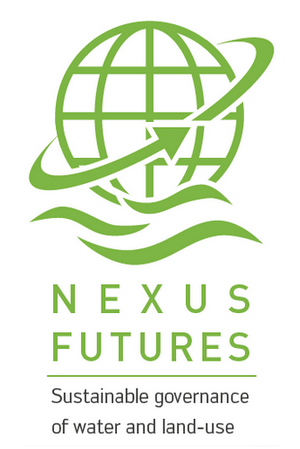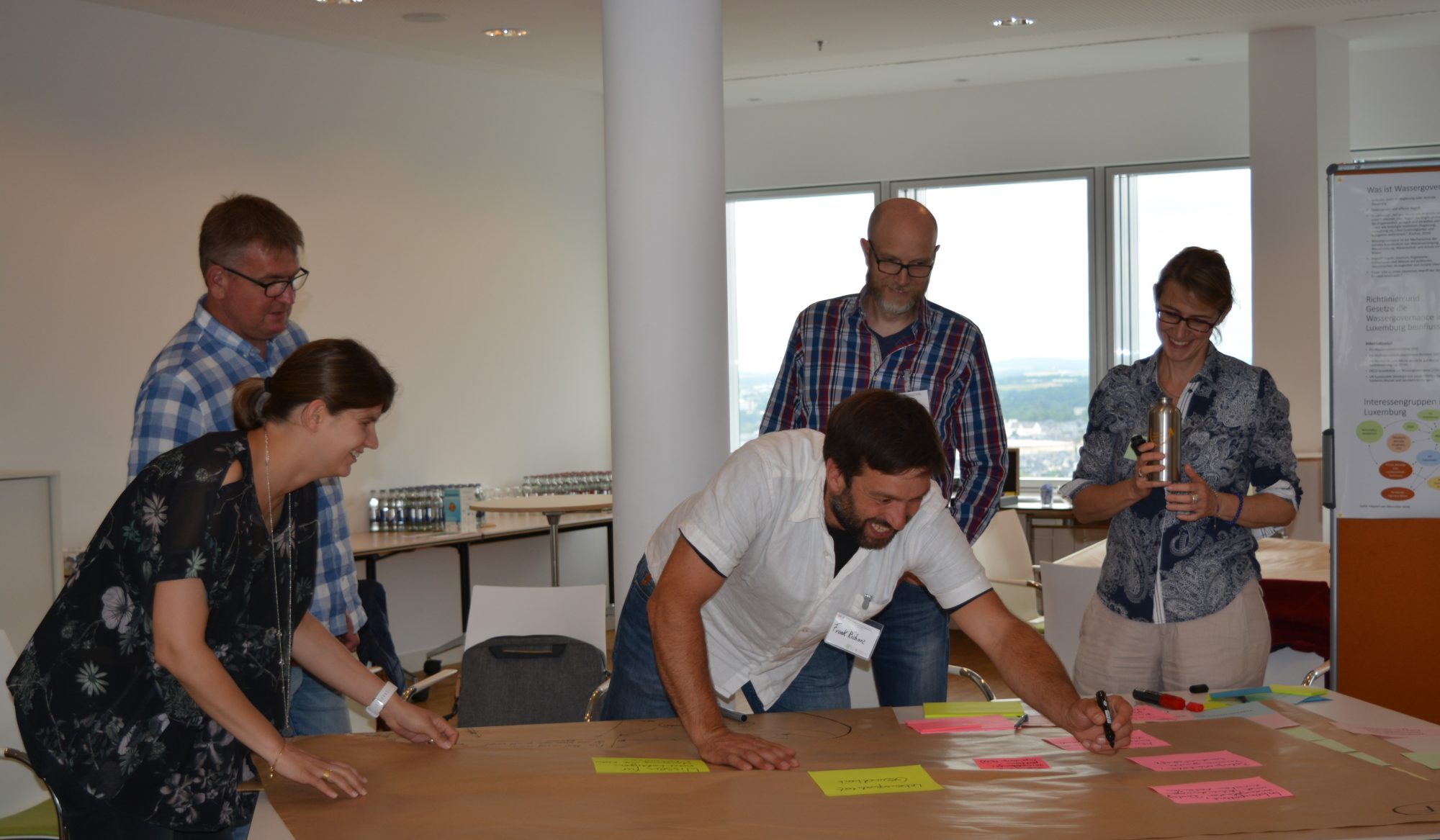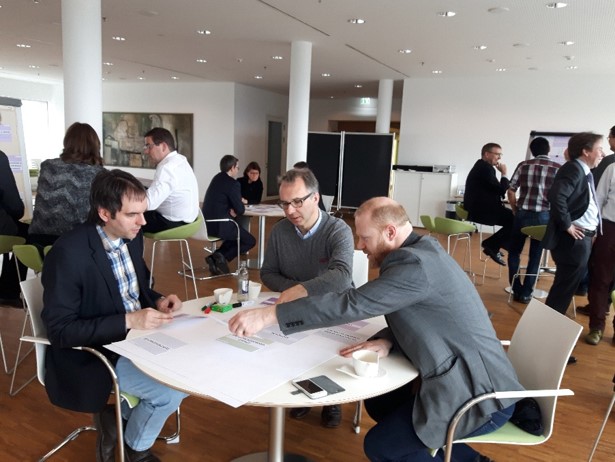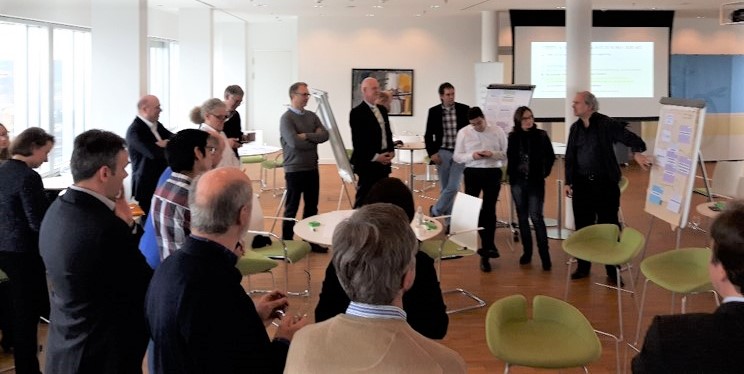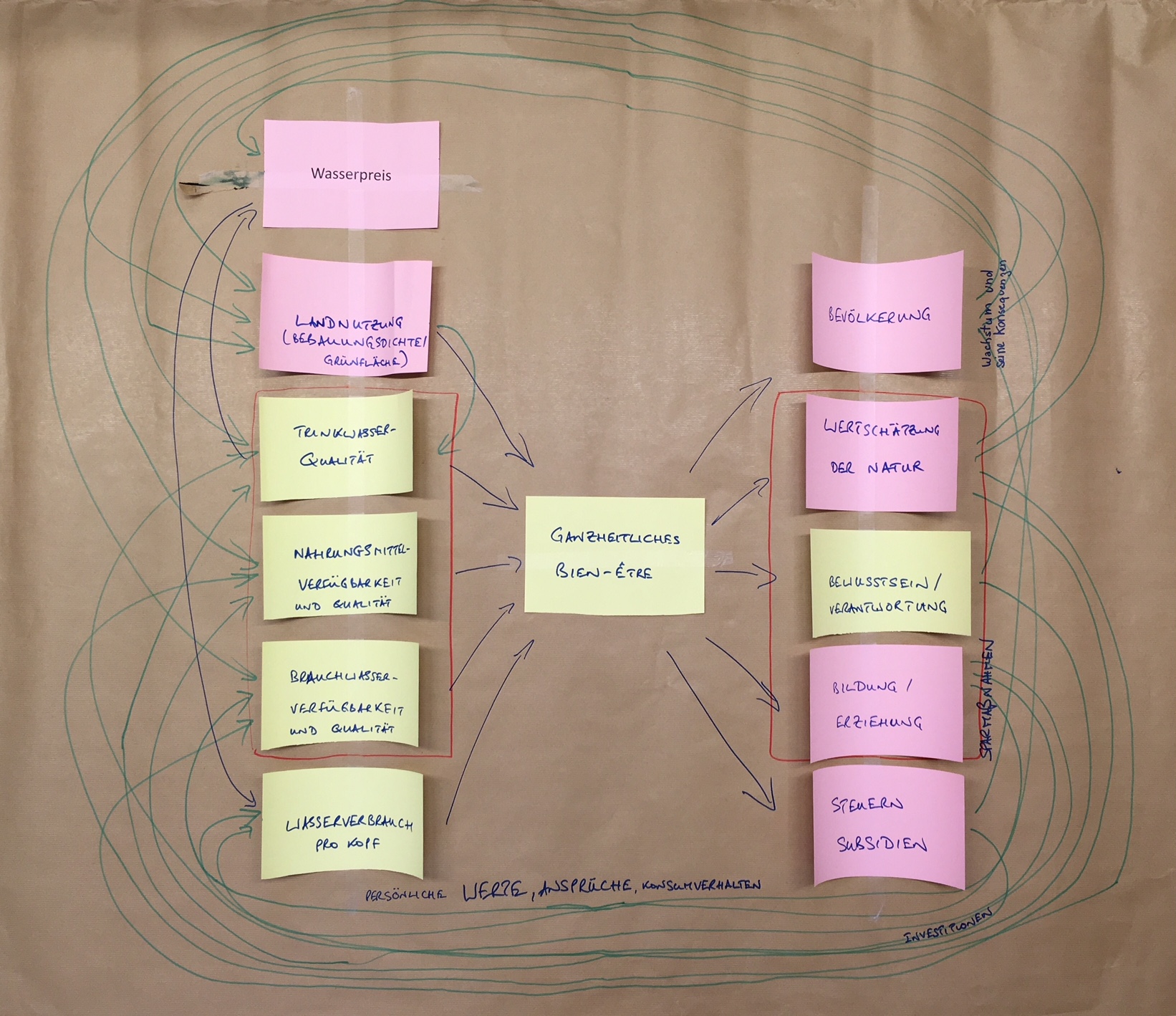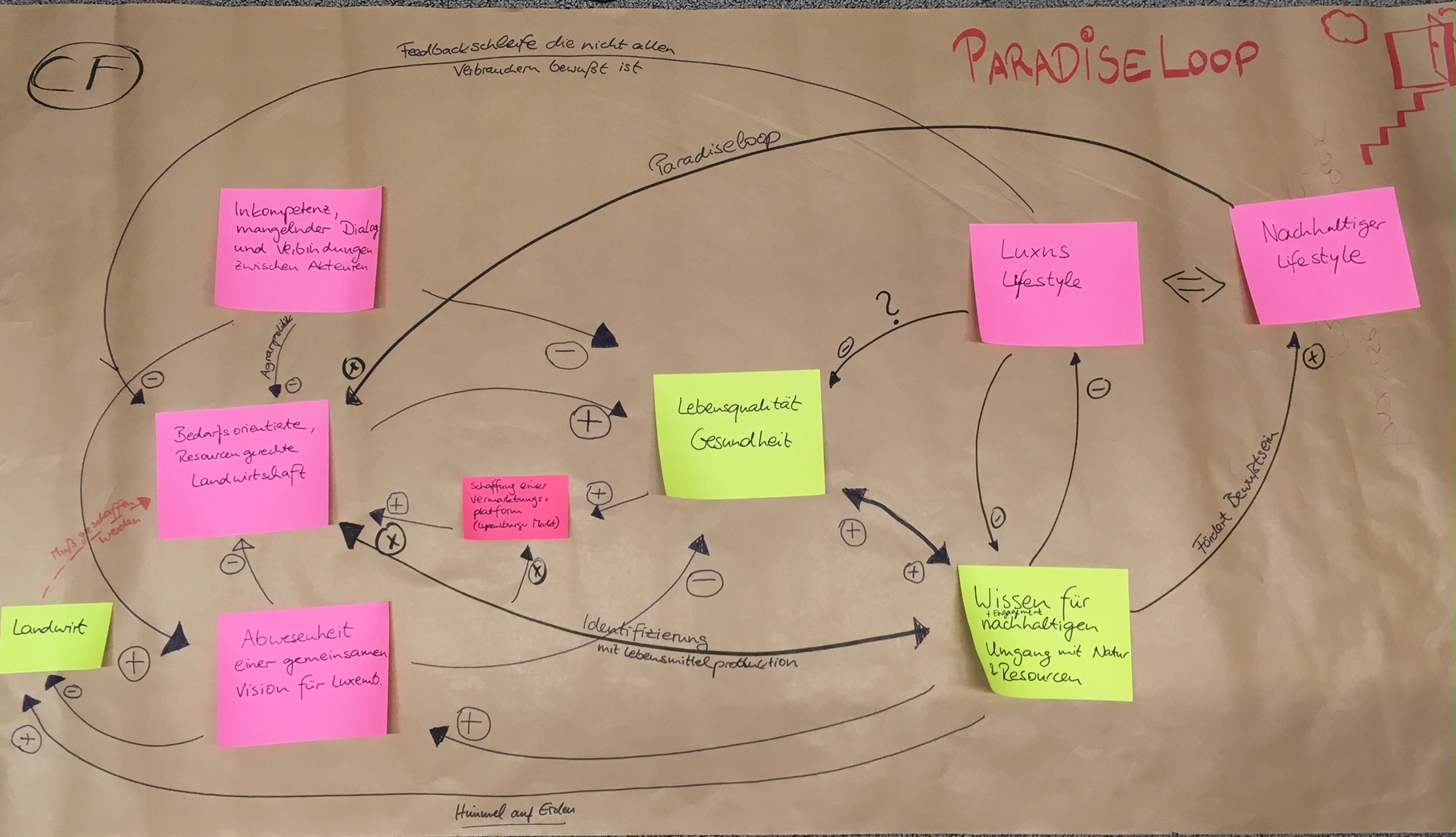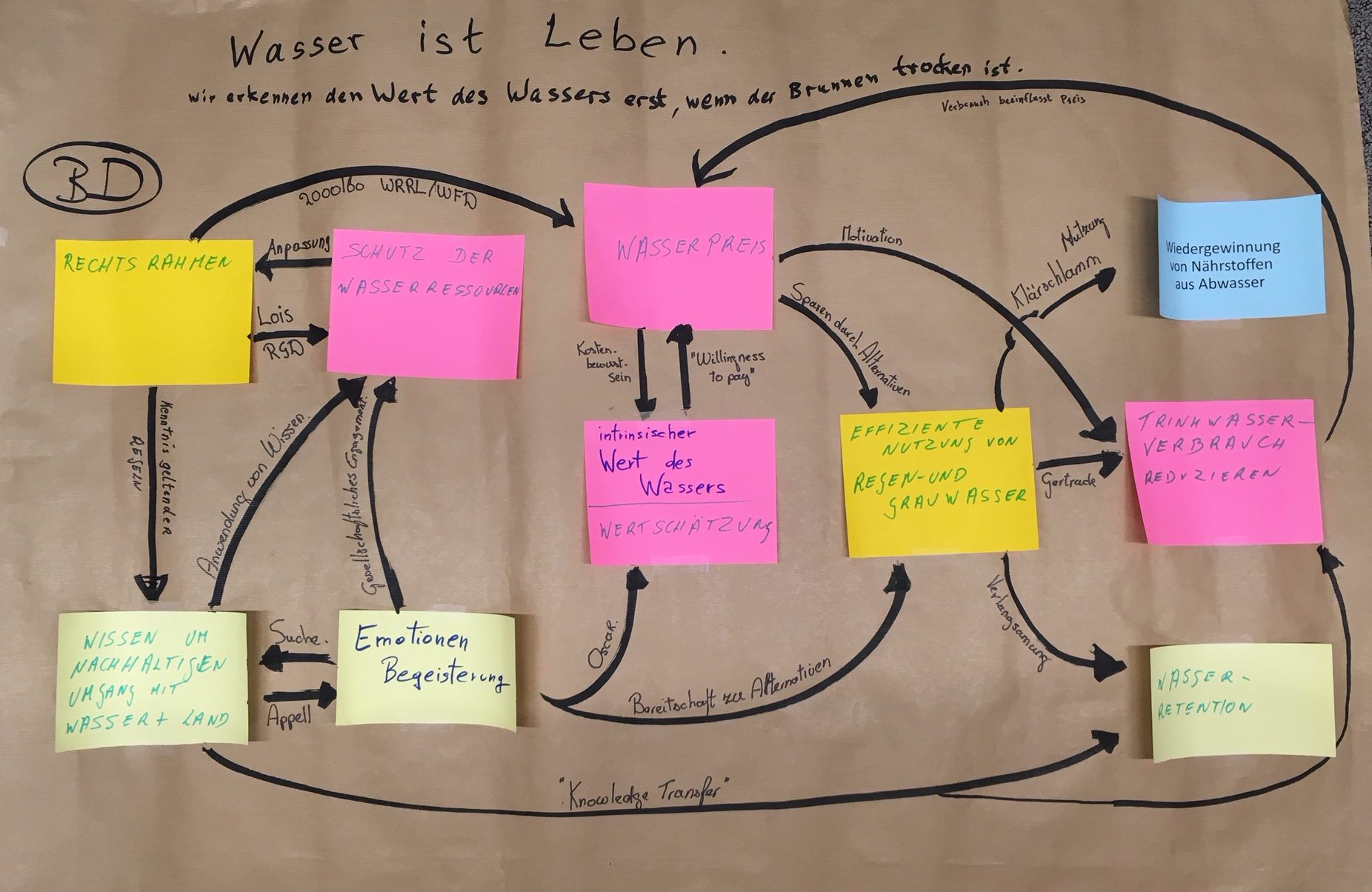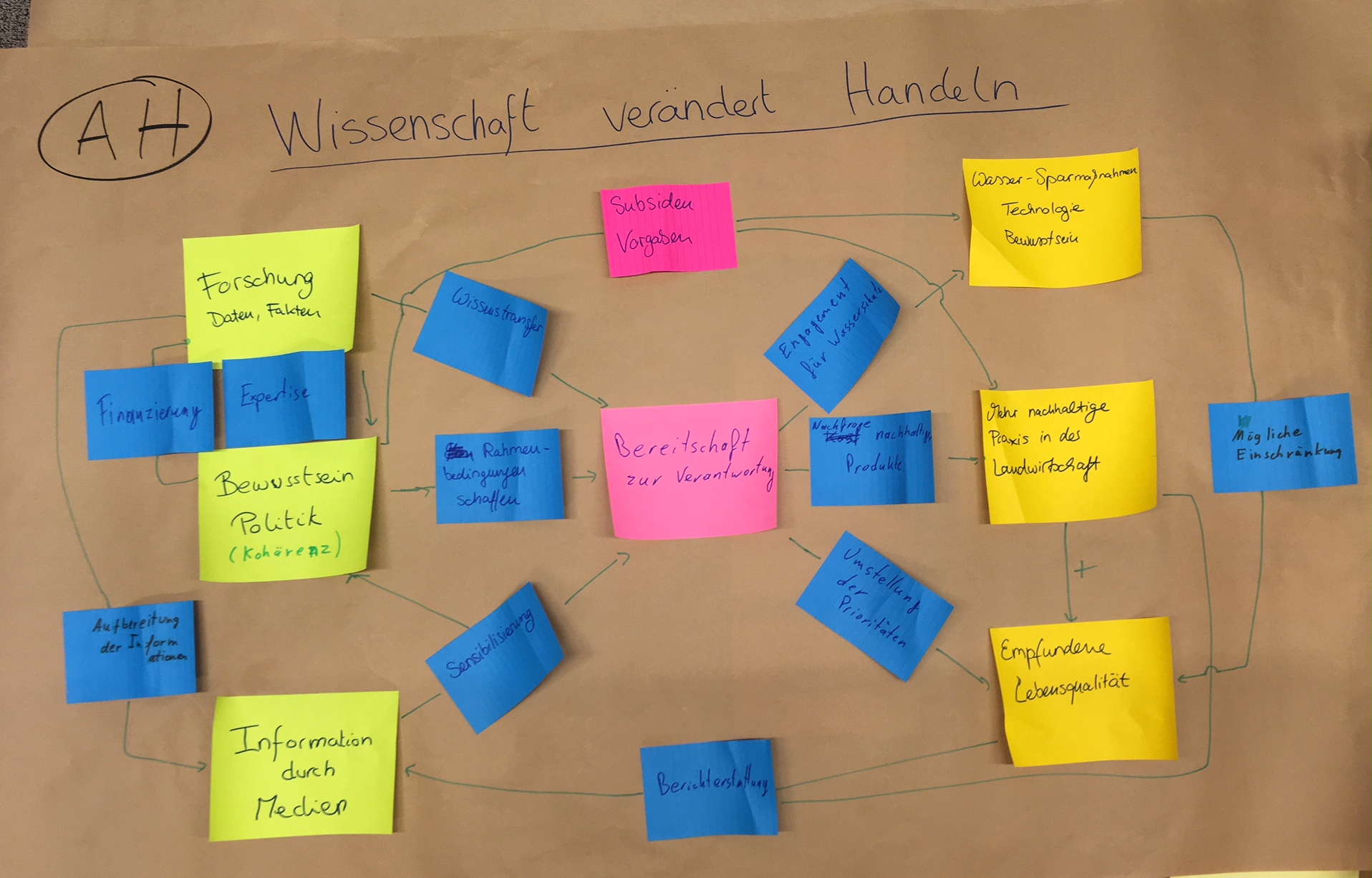Scenarios
In the face of complex challenges, especially in group meetings, we tend to take a stance and defend our point of view based on past experiences. In turbulent times of accelerating global and local changes that are interconnected, this mode will not suffice. How can we find better ways to embrace that the future is open and uncertain, and jointly tap into collective intelligence and very diverse sets of experiences and world views as we deliberate which developments we might want to influence, and how?
Scenarios present a set of images of challenging but plausible futures in divergent but complementary ways. A set of scenarios thus helps to highlight possible challenges and opportunities, as well as risks and uncertainties. At best scenarios also illustrate how and why disparate groups attribute very different values to alternative development pathways, and present a basis for structured negotiation and anticipation of possible future trade-offs. At the same time, they also highlight fields for collaborative action among the involved stakeholders, in particular in situations where shared risks can only be averted with common action.
Scenarios are always created as a set in which each scenario addresses very different systems structures, dynamics of interactions, patterns of behavior, and their impacts and uncertainties. Open futures suggest an infinite number of possible different development paths leading to different sets of outcomes. By simply juxta-posing three very different images of the future, as in a scenario set, helps us to open our minds to the vast number of possible futures that are evoked with the help of a good scenario set. At the same time, we have three clearly structured and salient future spaces that we can point to and talk about when we have to take into account open futures in decisions today.
In the scenario approaches in the NEXUS FUTURES project, the common journey of scenario development is part of the goal. All who engage in the participatory process in our workshops already during each workshop can gain new insights from dialogues that should be salient to defining their strategies, priorities and projects. The scenario set can also provide a framework for future-oriented systems thinking to test national policies and action plans together with recommended measures for implementation.
The national scenarios are being developed in a process that comprised interviews as well as three workshops with experts and stakeholders from different sectors including agronomy, climatology, hydrology, ecology, architecture, energy, land planning, art, economics, education and environmental policy.
A total of 63 participants from a wide variety of organisations participated in the three workshops. The first workshop was held on 18th & 19th June 2018, the second on the 27th November 2018 and the final on 29th Janaury 2019. The resulting narratives created by the workshop participants are now being enriched through collaboration with working groups and experts. The outcome of this process will be a rich set of plausible but challenging future scenarios for Luxembourg.

